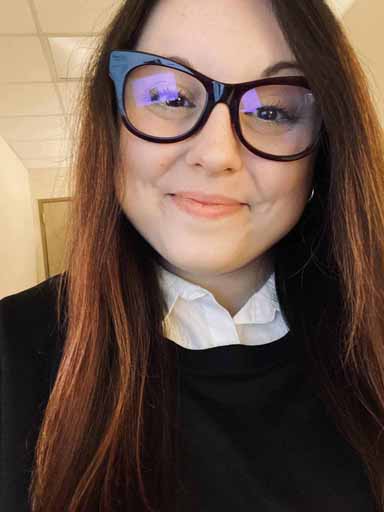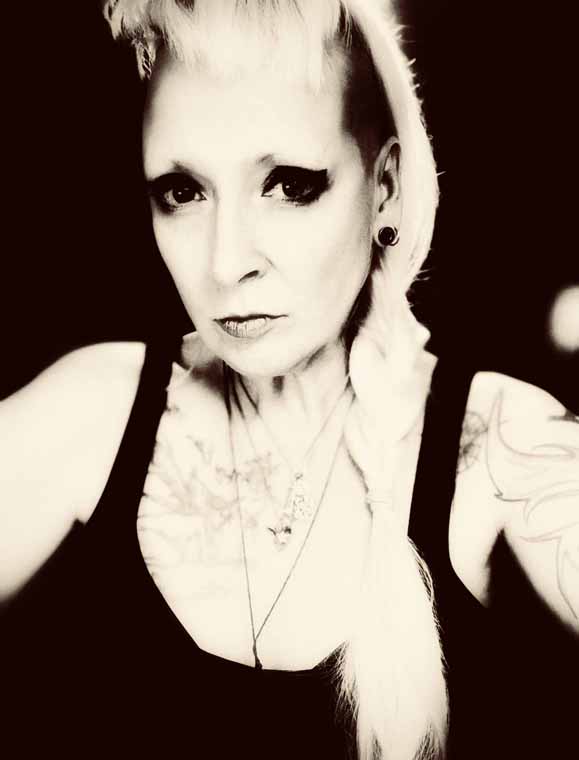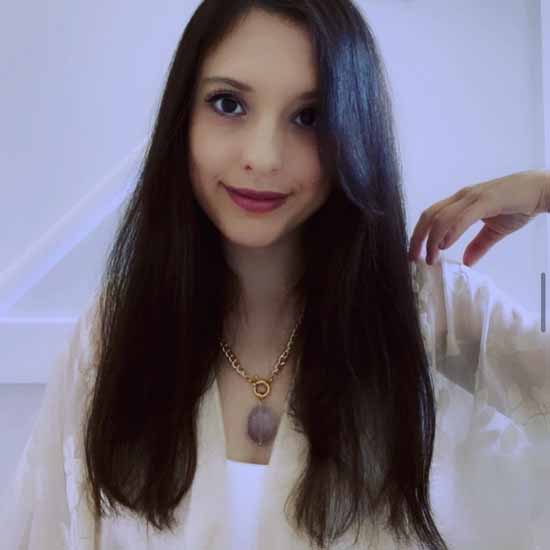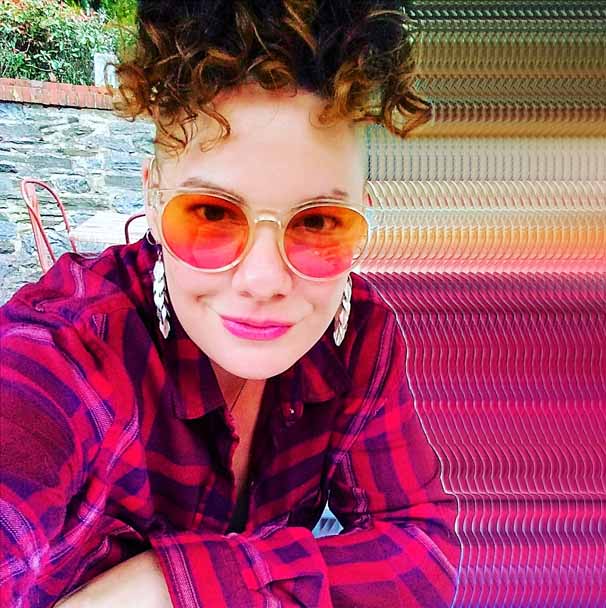Welcome back for part two of our Howl roundtable! Last week, we met our eleven featured authors and learned about their stories in the anthology. Today, we’ll talk all about the relationship between werewolves and femininity as well as what these amazing writers are working on next.
And with that, let’s take it away!
This is specifically a Women in Horror anthology. For you, what’s the connection between werewolves and the feminine? Do you feel they’re a natural fit?
 A.C. WISE: I do think there’s a natural fit between women and werewolves. There’s a lot of mythology connecting both women and werewolves with the moon, there are menstrual cycles and lunar cycles, but I think it goes beyond that as well. Puberty for people of any gender feels like a natural fit for a werewolf story, where your body suddenly changes in ways beyond your control and you almost become a stranger to yourself in some ways. There are links to be made between sexuality and werewolves as well, the idea of animal urges and hunger, or between family and werewolves with the idea of pack behavior. Werewolves are very versatile creatures when it comes to storytelling, as are many so-called monsters when you really think about it. One of my initial ideas for a story for Howl was around a werewolf who no longer transforms after going through menopause, but that story didn’t quite pan out. I might still go back to the idea someday.
A.C. WISE: I do think there’s a natural fit between women and werewolves. There’s a lot of mythology connecting both women and werewolves with the moon, there are menstrual cycles and lunar cycles, but I think it goes beyond that as well. Puberty for people of any gender feels like a natural fit for a werewolf story, where your body suddenly changes in ways beyond your control and you almost become a stranger to yourself in some ways. There are links to be made between sexuality and werewolves as well, the idea of animal urges and hunger, or between family and werewolves with the idea of pack behavior. Werewolves are very versatile creatures when it comes to storytelling, as are many so-called monsters when you really think about it. One of my initial ideas for a story for Howl was around a werewolf who no longer transforms after going through menopause, but that story didn’t quite pan out. I might still go back to the idea someday.
AI JIANG: It’s funny because the first thing that came to mind when I thought of werewolves and the feminine is our monthly cycles—the way our emotions and bodies change and how (sometimes, depending on the person) become someone very different, somewhat different, only a little different than we are other days of the month. But I also think of the way the feminine is suppressed, is allowed to flourish, and the overall constraints on the feminine and how it fosters conditions of transformation, of pent up frustration and rage.
LINDY RYAN: For me, werewolves and the feminine are a perfect pairing. So much of being a woman is about cycles, transformation (body horror), and the constant pressure to be tame, polite, palatable. But under the surface, there’s rage, hunger, and wildness. When co-editor Stephanie M. Wytovich and I built this anthology, we did so around the idea of shedding our sheep’s clothing, embracing our monstrosity, and howling at the moon together—and as a pack, alongside some of our favorite women in horror to howl alongside us, to explore what it means to claim the beast inside rather than be shamed—or hunted—for it. For women, the werewolf isn’t just a monster—it’s a metaphor for survival, sisterhood, and liberation. It’s freedom. And that’s something we all need to be reminded of right now.
KAILEY TEDESCO: Sabrina Orah Mark wrote a fantastic essay in her Paris Review column called “The Postmenopausal Fairy Tale” about the presence of the big bad wolf archetype in fairy tales. The essay is so memorable, for me, because it highlights the ways that society scrutinizes, problematizes, and objectifies changing femme bodies. Werewolves seem to exist as an exploration of the somatic self. There also seems to be a recurring element of spectacle in most werewolf narratives where the transformation itself is examined through a specific and often dissective gaze. The very real horrors femme bodies are subjected to and have been subjected to since the beginning of time feels like a perfect analog for this human to animal transformation.
 STEPHANIE M. WYTOVICH: When I look at the world and everything that’s happening right now, I can’t think of a better monster than the werewolf for women to turn to. Werewolves are creatures that live by cycles, embrace/fight transformation, and who seek power from within, often through exploring and accepting monstrosity and the fractured self; they’re also a metaphor for sexual violence, for hormonal disruption/pregnancy, and absolute, unfiltered rage.
STEPHANIE M. WYTOVICH: When I look at the world and everything that’s happening right now, I can’t think of a better monster than the werewolf for women to turn to. Werewolves are creatures that live by cycles, embrace/fight transformation, and who seek power from within, often through exploring and accepting monstrosity and the fractured self; they’re also a metaphor for sexual violence, for hormonal disruption/pregnancy, and absolute, unfiltered rage.
CHRISTA CARMEN: So, again, with the lack of passion for werewolves that I suffered for a while, I only really personally explored their connection to the feminine with this story, “The Clearing.” However, like I mentioned above, as soon as Lindy and Stephanie mentioned this would be a werewolf-themed project, I made the immediate connection to the idea that I’d been working away at in my head for a year and a half, an idea that was very much connected to a very feminine experience.
Of course, I’ve always been aware that the connection between werewolves and the feminine was a strong one, explored by myriad artists, filmmakers, and writers. There’s the obvious connection between women’s menstrual cycles and the phases of the moon, as well as the idea that werewolf narratives serve as allegories for the fears and anxieties surrounding female sexuality. From a more empowering standpoint, werewolves are about reclamation, women embracing their wildness, strength, and independence.
My favorite connection, though, and the one on which I based my story, is the idea of werewolves as a stand-in for female rage. What the hell could be better, as a woman or person who identifies with the feminine, than having the ability to shed one’s skin and tear your enemies apart, to lose oneself in the dark of the forest, to howl at the goddamn moon while you know, in your bones, bones capable of shifting and reforming, that you and only you are in charge of your fate.
As long as you stay away from the silver bullets, that is.
WENDY WAGNER: Werewolf stories are always playing around with the hidden aspects of ourselves, the parts of us we hide away from polite society. I feel like Western society has a lot of opinions about what women are supposed to be like, and many of our earthier needs and urges are considered unfeminine. We often can only be our full selves in the dark.
SHANNON KEARNS: I absolutely believe the werewolf is connected to the feminine. We transform with the moon cycles, not just the full moon. As I was healing my body after giving birth to my son, my intention was to align my bodily cycles with the moon phases. There is an intimate connection between the moon’s pull and our bodies’ response. The new moon is a time of release and shedding, calling in our shadow and revealing our inner darkness to be held with care and tenderness. The full moon, typically the time of the werewolf’s transformation, is a connection to power and illumination. There is nothing not feminine about this! I am so in love with the fact that this anthology will cast full moonlight on a rewriting of the werewolf archetype.
KATRINA MONROE: Moon cycles and monthly blood aside, the werewolf, to me, represents a barely-controlled rage, a simmering under the surface hidden behind a pretty façade. If that doesn’t speak to the feminine, I don’t know what does.
It feels right to claim the werewolf for the feminine, too, because, (unlike the vampire) the werewolf is harder to sexualize. She is protected by her fur and rage and animalistic instinct. She isn’t polite. She doesn’t assume the best intentions of the men around her. She is no longer prey, but the predator.
 DONNA LYNCH: Certainly the bloody and painful transitions women go through make for an incredibly strong connection.
DONNA LYNCH: Certainly the bloody and painful transitions women go through make for an incredibly strong connection.
Women have also been conditioned to bottle up extreme feelings like rage lest we be harshly judged and stereotyped far more than men for our “outbursts”. When a woman expresses extreme emotions she is “crazy”. When a man does it it’s often because “he just couldn’t take it anymore”.
One part of my story that I struggled with was the inclusion of a violence-against-women trope, which I know is not only triggering but also overused. However, it was loosely based on something I know well and was my way of concluding a scenario wherein justice is done. And I think it’s an acceptable way, in this case, to cause the character to release her rage. It was going to take something horrific to make that happen, and as a woman, there are few things more horrific than the threat of violation.
JESSICA MCHUGH: I do. I think from the first time I read “Lila the Werewolf” when I was a kid, I’ve identified werewolves as feminine creatures. I saw The Howling pretty young too, so that probably had an influence. Now that I think of it, maybe that’s why I had a distaste for so many of the werewolf movies I grew up with. Not enough female werewolves! When Ginger Snaps came out, I was like, “This is more like it.”
What’s next for you? What projects do you have coming up? And where can we find you online?
A.C. WISE: The next thing coming up from me is my new novel Ballad of the Bone Road, which comes out in January 2026 from Titan Books. Looking backward a bit, I do actually have another werewolfish kind of story titled Wolf Moon, Antler Moon that was published at Reactor earlier this year (https://reactormag.com/wolf-
AI JIANG: The second book in the Natural Engines duology, A River From the Sky, is forthcoming April 2026, and my debut science fantasy novel, An Empire Above Opera, is forthcoming September 2026. I have a few projects on deck that I’m working on at the moment or out on submission, so I excited to see the direction they take and where they land!
LINDY RYAN: My new novel, DOLLFACE, a suburban slasher pitched as Barbie meets Scream releases February 24th, 2026 from Minotaur Books! Till then, find me on IG @lindyryanwrites, as well as my monthly newsletter, and on Substack.
 KAILEY TEDESCO: At the moment, I’m still in promotion mode for MOTHERDEVIL which can be found at White Stag Publishing or Asterism Books. I’m on a fall tour where I will be teaching workshops at several libraries across PA and NJ. I’ll also be reading and selling books at several performances of The Devil and Daisy Dirt across multiple cities in NJ. My newest project (currently untitled) is very slowly in the works, but a three-poem suite from this in-progress collection will be published in F(r)iction‘s fairytale themed issue later this year.
KAILEY TEDESCO: At the moment, I’m still in promotion mode for MOTHERDEVIL which can be found at White Stag Publishing or Asterism Books. I’m on a fall tour where I will be teaching workshops at several libraries across PA and NJ. I’ll also be reading and selling books at several performances of The Devil and Daisy Dirt across multiple cities in NJ. My newest project (currently untitled) is very slowly in the works, but a three-poem suite from this in-progress collection will be published in F(r)iction‘s fairytale themed issue later this year.
STEPHANIE M. WYTOVICH: I just finished a short story collection that I’m about to go on submission with (fingers crossed!), and I have my hands in some other projects that are just starting to get off the ground, but that I’m really excited about. Lots to look forward to!
Readers can follow me at https://www.stephaniemwytovich.com/ and on Twitter, Threads, and Instagram @SWytovich and @thehauntedbookshelf. You can also sign up for my newsletter at https://stephaniemwytovich.substack.com/.
CHRISTA CARMEN: My next novel, How to Fake a Haunting (sort of a ‘Lake Mungo meets Malevolent’ mashup…I know those are both horror film comp titles rather than novels, but they work!), is out Oct. 7th from Thomas & Mercer. I also have a story, “Comeback Kid,” in The Rack II: More Stories Inspired by Vintage Horror Paperbacks, edited by Tom Deady, and another anthology (or three) that can’t be announced yet.
Online, I’m at Facebook (https://www.facebook.com/christaqua/), Instagram (@christaqua), and Bluesky (@christaqua.bsky.social), as well as on my website, www.christacarmen.com.
WENDY WAGNER: I am always working on the newest issue of Nightmare Magazine, where we publish a wide variety of short horror fiction and poetry. I’ve got some books out on submission, and I’m scribbling away at another one. My online home is winniewoohoo.com.http://winniewoohoo.com
SHANNON KEARNS: After releasing my poetry collection just this past August, I would like to say I’m giving myself a short break from writing, but I’m not! I’m knee deep in a novel, a sapphic retelling of The Tempest, as well as beginning to compile and dream up new ideas for my next poetry collection. I am also an abstract painter and have two gallery openings this month! You can connect with me at shannonmkearns.com and on Instagram @shannon_mk_writer for more of my journey through writing and art!
KATRINA MONROE: As for writing, I am dabbling! Being between book contracts is scary, but it also is a bit exhilarating, being allowed to poke at several things to see which one bites back. Otherwise, I am working with a fabulous individual on an exciting women-in-horror project we hope to announce soon.
I’ve limited my social media of late, so can be found almost exclusively on Instagram (@katrinamonroeauthor).
 JESSICA MCHUGH: I’m currently writing an erotic horror blackout poetry collection / 3 Act Play called “FEAST,” created from the pages of “Wuthering Heights,” so I hope to have that out next year. Also, “Witches in the Warren,” the 3rd and final novel in my cross-generational horror trilogy, “The Gardening Guidebooks Trilogy” will be out from Ghoulish Books in 2026. It’s been wild saying goodbye to characters I’ve been writing since 2007, but I also feel incredibly grateful for the opportunity to bring this saga to a close. You can find me basically everywhere under @thejessmchugh, as well as mchughniverse.com. I look forward to wolfin’ out with you all!
JESSICA MCHUGH: I’m currently writing an erotic horror blackout poetry collection / 3 Act Play called “FEAST,” created from the pages of “Wuthering Heights,” so I hope to have that out next year. Also, “Witches in the Warren,” the 3rd and final novel in my cross-generational horror trilogy, “The Gardening Guidebooks Trilogy” will be out from Ghoulish Books in 2026. It’s been wild saying goodbye to characters I’ve been writing since 2007, but I also feel incredibly grateful for the opportunity to bring this saga to a close. You can find me basically everywhere under @thejessmchugh, as well as mchughniverse.com. I look forward to wolfin’ out with you all!
DONNA LYNCH: As mentioned, writing is a laborious and sometimes unpleasant process for me (yet I’m compelled!) so I am SLOWLY working on another poetry collection. I thought I knew what it was about, but I don’t, so I have some things to figure out.
Also, we’re getting into the studio to work on a new album, which is also difficult, but necessary for me to do.
I have a lot of travel coming up with my various bands, so that eats up the year with a quickness. The road is my place of peace.
And that’s our roundtable! Please pick up a copy of Howl, which is out today, and enjoy all the werewolf transformations and bloody rage!
Happy reading, and happy howling!
